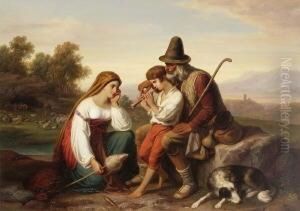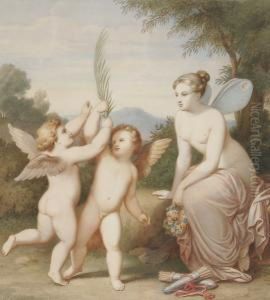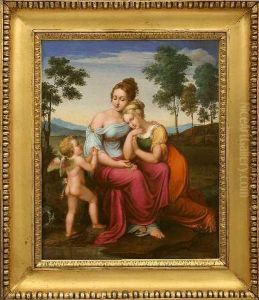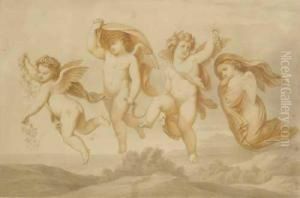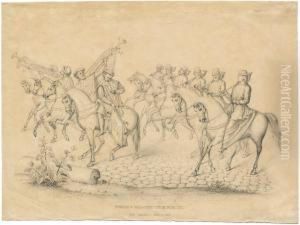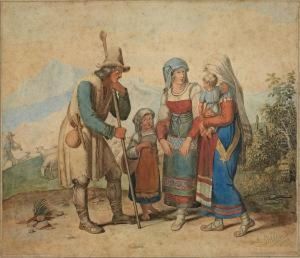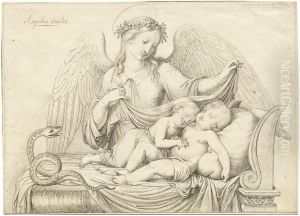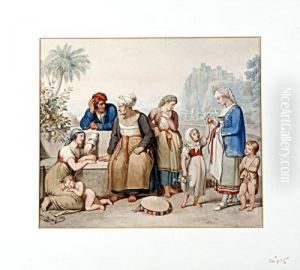Johannes Riepenhausen Paintings
Johannes Riepenhausen was a German painter and engraver, born in 1788 in Göttingen, Germany. Coming from a family with a strong artistic background, Johannes, alongside his brother Franz Riepenhausen, became known for their contributions to the early 19th-century Romantic movement in art. Their work was deeply influenced by the Nazarene movement, a group of early 19th-century German Romantic painters who aimed to revive honesty and spirituality in Christian art. The Nazarenes typically sought inspiration from medieval and early Renaissance artists, emphasizing pious and historical themes.
Johannes and Franz Riepenhausen initially received their artistic training from their father, who was also a painter. They later moved to Rome, which was a center for artists during that period, to further their studies and immerse themselves in the rich artistic heritage of the city. Rome provided the Riepenhausen brothers with endless sources of inspiration, and it was there that they became associated with the Nazarene movement. Their work, characterized by its meticulous detail, vibrant colors, and devout thematic elements, gained recognition for its revivalist approach to Christian art.
Throughout his career, Johannes Riepenhausen was known for his historical paintings and engravings. He was particularly fascinated with the life and works of Raphael, producing a series of works that depicted the life of the famous Renaissance artist. This series helped to popularize Riepenhausen's work and established him as a significant figure in the Romantic art movement. Despite the fame of these works, much of Johannes Riepenhausen's contribution to art has been overshadowed by other contemporaries of the Romantic and Nazarene movements.
Johannes Riepenhausen's legacy is that of an artist who, alongside his brother, sought to infuse a spiritual and moral dimension into their art, drawing heavily on the religious and historical themes of the past. His commitment to the ideals of the Nazarene movement and his devotion to the revival of early Christian art principles mark him as an important, though perhaps underappreciated, figure in the history of 19th-century European art. Johannes Riepenhausen passed away in 1860, leaving behind a body of work that continues to be studied for its contribution to the Romantic and Nazarene movements.
